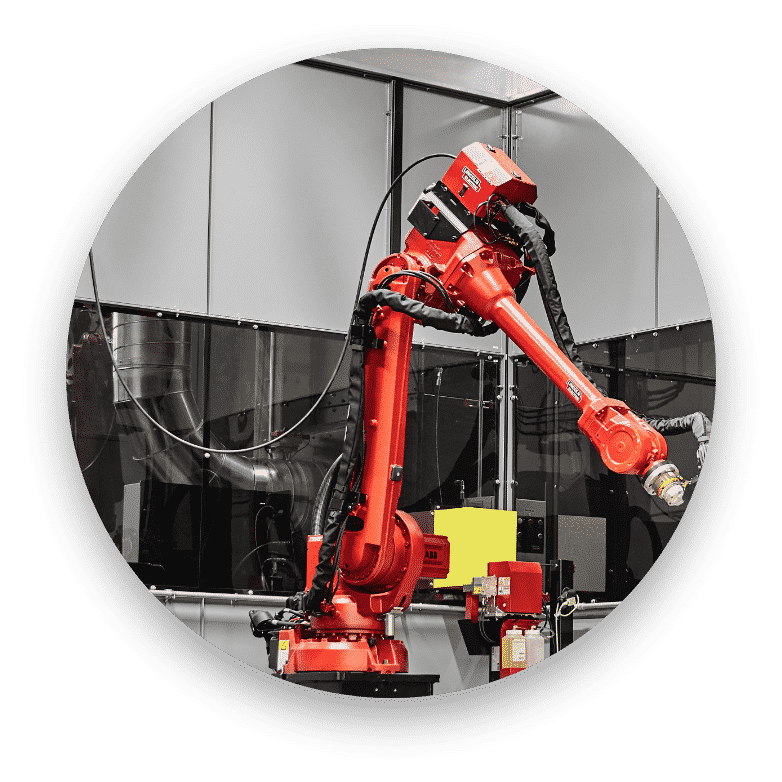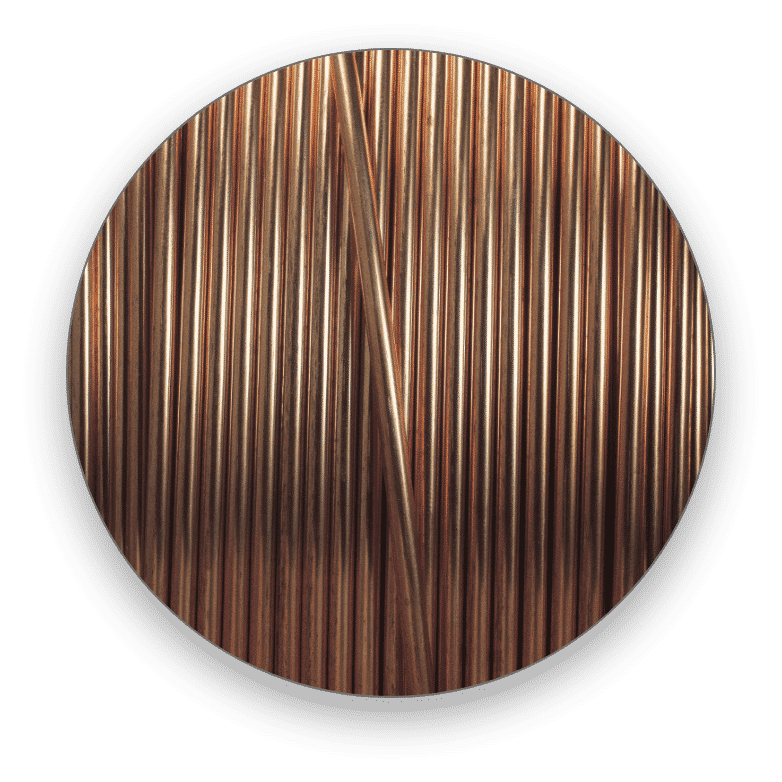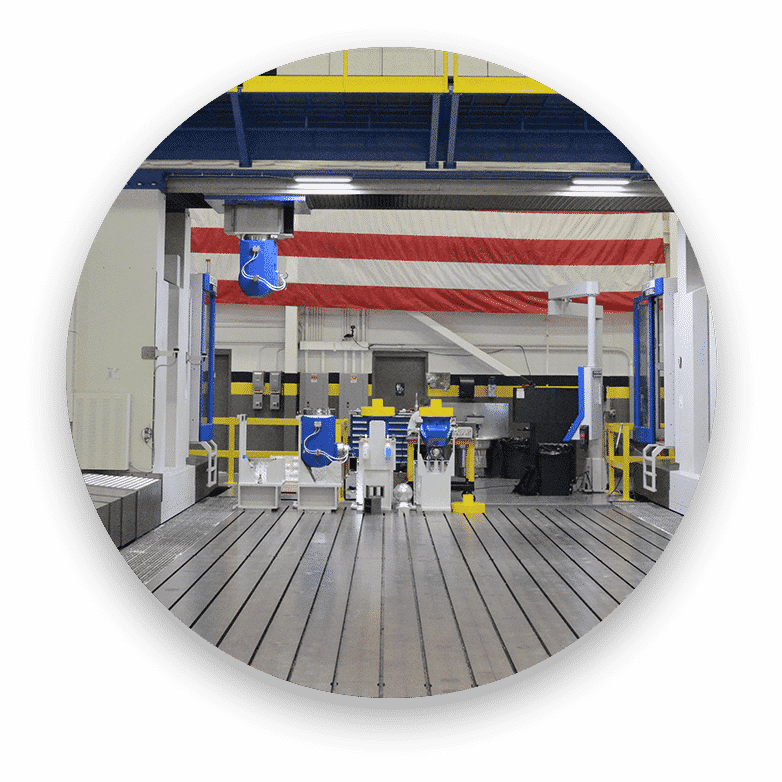Save time, reduce direct and indirect costs, explore more possibilities, and operate with greater efficiency than with traditional manufacturing operations by using our large-scale 3D metal printing technology for your next large architectural component or structure.
3D printing, also known as additive manufacturing, is a revolutionary technology that holds promise to revolutionize manufacturing as we know it. However, the vast majority of existing technologies are limited in terms of build envelope and production rates, forcing users to forego their use altogether or compromise on size, material waste, and more.
One type of 3D metal printing, wire arc additive manufacturing (WAAM), also known as Gas Metal Arc Additive Manufacturing (GMAAM), has gained attention in recent years due to its ability to produce large metal components with high accuracy, efficiency, and countless other benefits.
Our proprietary, state-of-the-art WAAM technology presents a strong additive manufacturing solution for a diverse range of large-scale industrial metal components, structures, and more for the architecture, design, and art industry. And with recent technology advancements, WAAM is becoming very sustainable, flexible, and fully automated.
In architecture, design, and art, complex features and geometries that must meet serious performance demands are common, but often difficult or impossible to manufacture. WAAM allows geometry optimization and greater opportunity for innovation and creativity, providing improved structural connections, performance, and freedom.
We are uniquely positioned in this space to bring the right experience and technologies for your project, based on your material and application requirements. Using GMAW arc welding or laser hot-wire processes, we can tap into a deep well of welding deposition, equipment, and automation knowledge to meet your needs. Every step is customized to deliver the best material, design, and end product for your specific application. Every conversation is a collaboration between our team and yours. Every outcome is designed to meet your operational needs.
Increase manufacturability and enhance customization and computational design
Improve efficiency by reducing material, labor, an assembly needs
Optimize designs to improve structural performance and simplify joining
Digital fabrication with reduced CO2 consumption and material waste
We can 3D print a variety of industrial metals, including combinations of materials.
Unlock new possibilities: components produced using our large-scale 3D metal printing technology are measured in feet or meters, not mere inches.
Tackle part geometries and features that are challenging or impossible for traditional processes like casting, machining, and manual forming.

With large-format wire-based metal additive manufacturing, the component is manipulated while depositing material. Advanced software is critical to address complex path-planning and coordinated motion between the robot and the positioner.

Full control over each layer’s wire path allows for optimal process parameters and material deposition.
We have developed height-sensing and adaptive feedback software to maintain tight customer-specified tolerances.
Complex component printing can be achieved using advanced robots collaborating with rotating positioners and motion-control software.
3D printing, also known as additive manufacturing, is a revolutionary technology that holds promise to revolutionize manufacturing as we know it. However, the vast majority of existing technologies are limited in terms of build envelope and production rates, forcing users to forego their use altogether or compromise on size, material waste, and more.




With large-format wire-based metal additive manufacturing, the part is manipulated while depositing material. Advanced software is critical to address complex path-planning and coordinated motion between the robot and the positioner.
Our large-scale 3D metal printing technology enables the creation of large, complex structures, such as those seen in architecture and public art, that would otherwise be very difficult, time-consuming, and expensive to manufacture. It also enables design improvements that can simplify joining and increase strength.
Speak to an architecture, design, and art industry large-scale 3D metal printing expert today! Our team is standing by, ready to help answer questions or get started on a quote for your project.